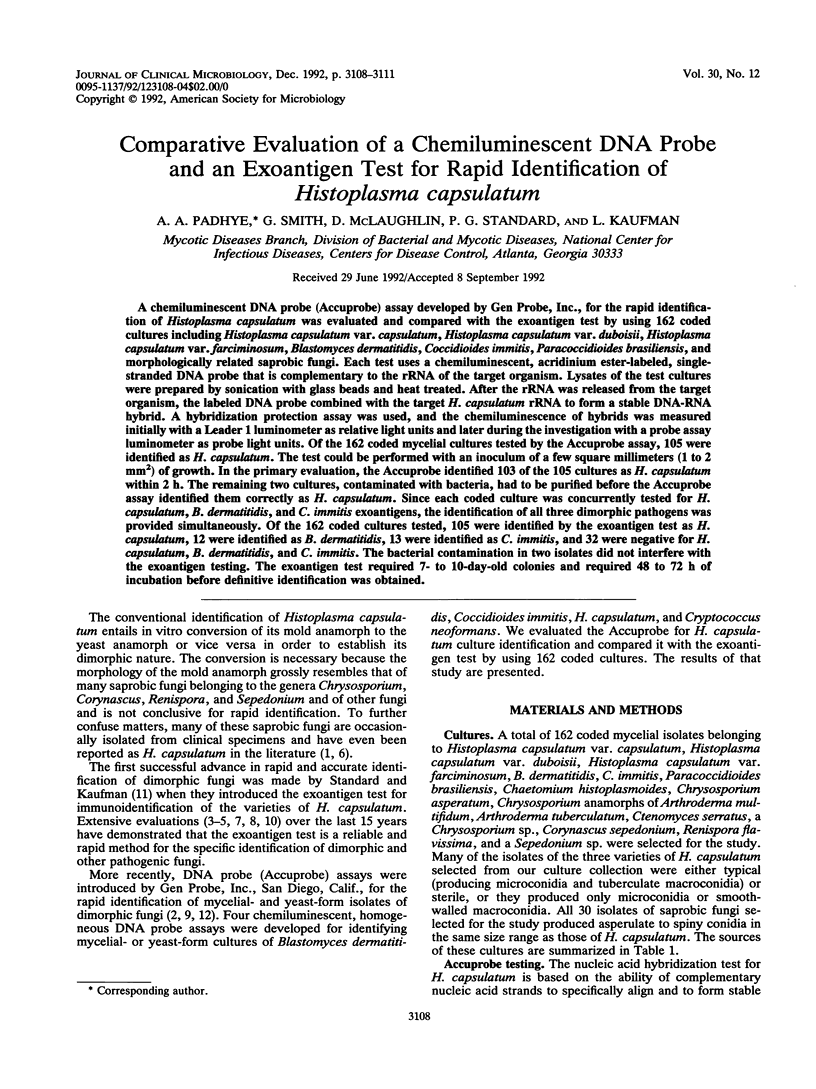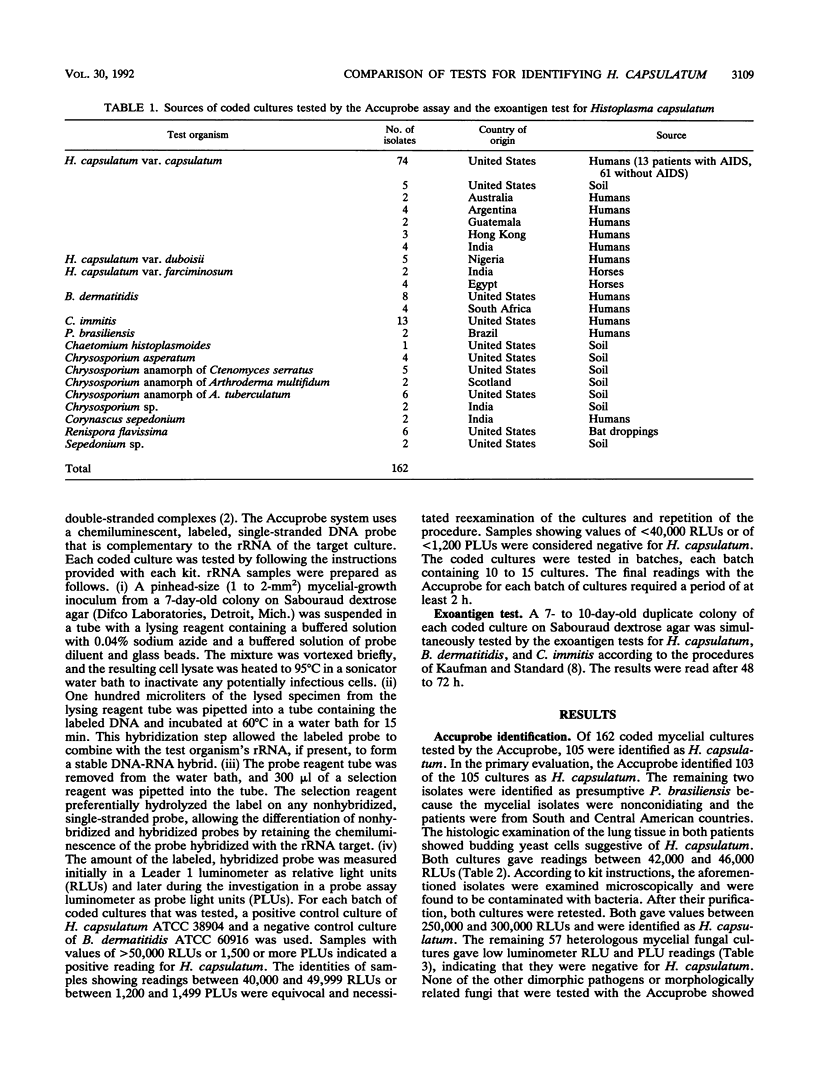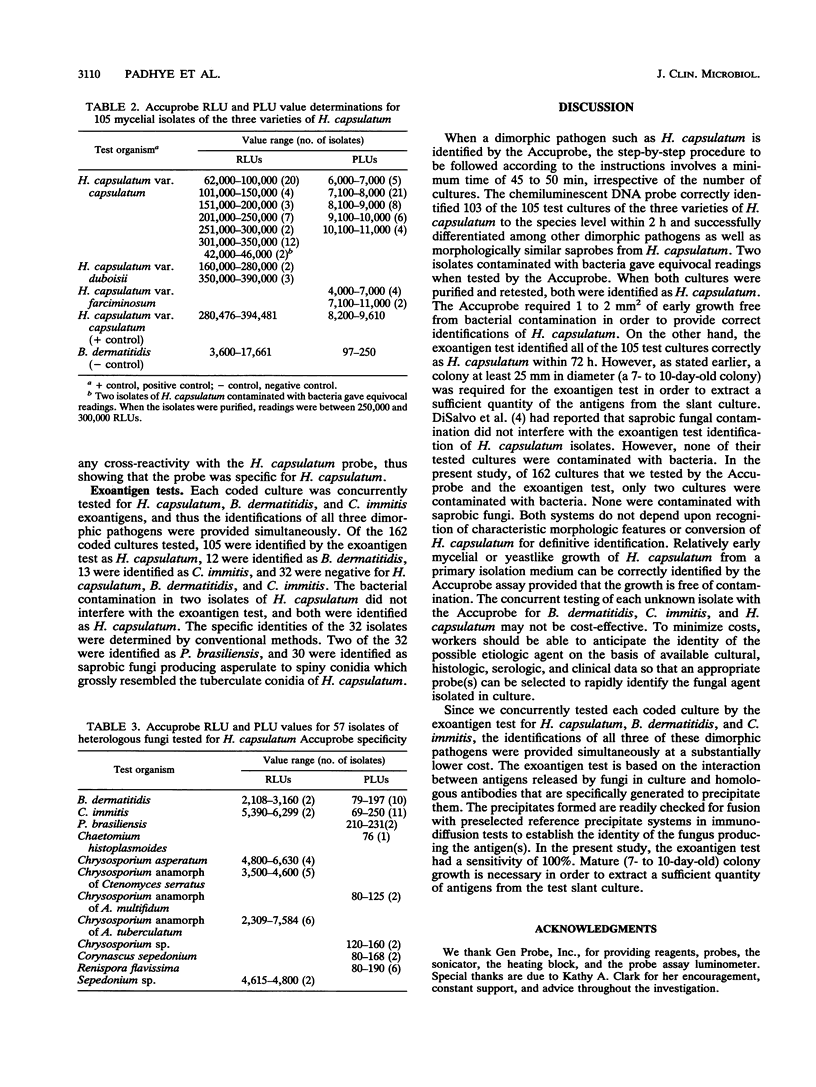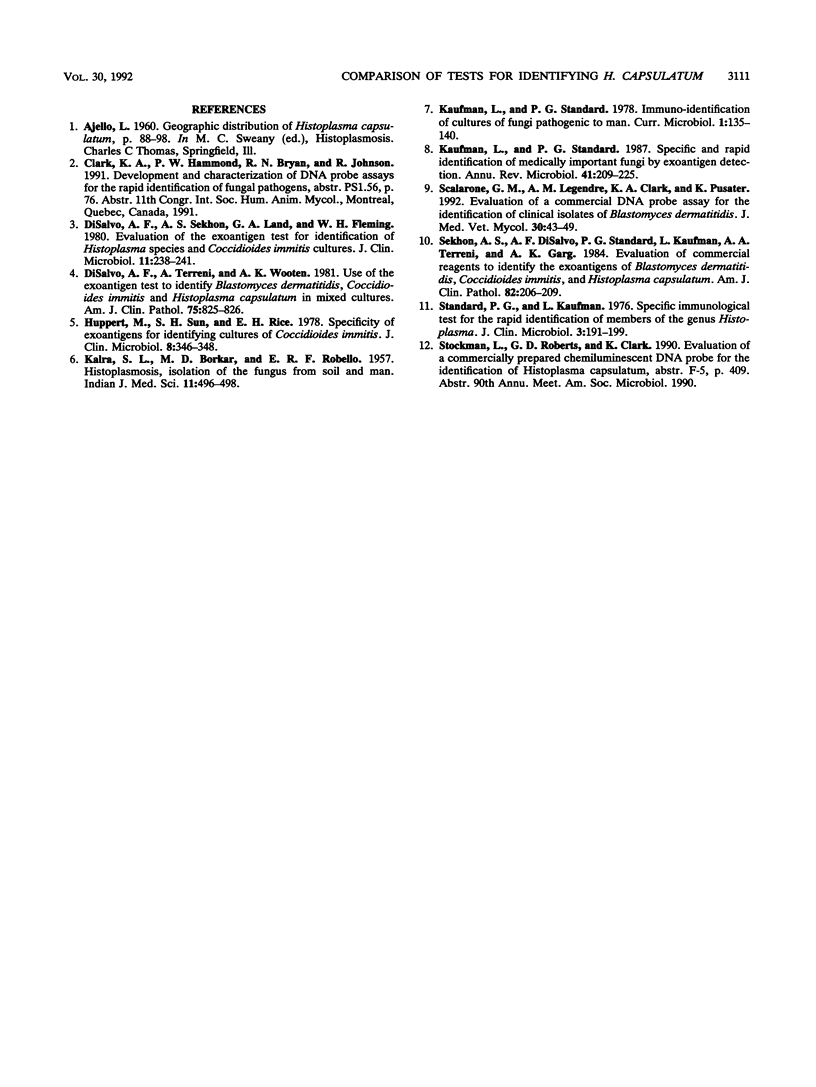Abstract
A chemiluminescent DNA probe (Accuprobe) assay developed by Gen Probe, Inc., for the rapid identification of Histoplasma capsulatum was evaluated and compared with the exoantigen test by using 162 coded cultures including Histoplasma capsulatum var. capsulatum, Histoplasma capsulatum var. duboisii, Histoplasma capsulatum var. farciminosum, Blastomyces dermatitidis, Coccidioides immitis, Paracoccidioides brasiliensis, and morphologically related saprobic fungi. Each test uses a chemiluminescent, acridinium ester-labeled, single-stranded DNA probe that is complementary to the rRNA of the target organism. Lysates of the test cultures were prepared by sonication with glass beads and heat treated. After the rRNA was released from the target organism, the labeled DNA probe combined with the target H. capsulatum rRNA to form a stable DNA-RNA hybrid. A hybridization protection assay was used, and the chemiluminescence of hybrids was measured initially with a Leader 1 luminometer as relative light units and later during the investigation with a probe assay luminometer as probe light units. Of the 162 coded mycelial cultures tested by the Accuprobe assay, 105 were identified as H. capsulatum. The test could be performed with an inoculum of a few square millimeters (1 to 2 mm2) of growth. In the primary evaluation, the Accuprobe identified 103 of the 105 cultures as H. capsulatum within 2 h. The remaining two cultures, contaminated with bacteria, had to be purified before the Accuprobe assay identified them correctly as H. capsulatum. Since each coded culture was concurrently tested for H. capsulatum, B. dermatitidis, and C. immitis exoantigens, the identification of all three dimorphic pathogens was provided simultaneously. Of the 162 coded cultures tested, 105 were identified by the exoantigen test as H. capsulatum, 12 were identified as B. dermatitidis, 13 were identified as C. immitis, and 32 were negative for H. capsulatum, B. dermatitidis, and C. immitis. The bacterial contamination in two isolates did not interfere with the exoantigen testing. The exoantigen test required 7- to 10-day-old colonies and required 48 to 72 h of incubation before definitive identification was obtained.
Full text
PDF



Selected References
These references are in PubMed. This may not be the complete list of references from this article.
- DiSalvo A. F., Sekhon A. S., Land G. A., Fleming W. H. Evaluation of the exoantigen test for identification of Histoplasma species and Coccidioides immitis cultures. J Clin Microbiol. 1980 Mar;11(3):238–241. doi: 10.1128/jcm.11.3.238-241.1980. [DOI] [PMC free article] [PubMed] [Google Scholar]
- DiSalvo A. F., Terreni A. A., Wooten A. K. Use of the exoantigen test to identify blastomyces dermatitidis, coccidioides immitis, and Histoplasma capsulatum in mixed cultures. Am J Clin Pathol. 1981 Jun;75(6):825–826. doi: 10.1093/ajcp/75.6.825. [DOI] [PubMed] [Google Scholar]
- Huppert M., Sun S. H., Rice E. H. Specificity of exoantigens for identifying cultures of Coccidioides immitis. J Clin Microbiol. 1978 Sep;8(3):346–348. doi: 10.1128/jcm.8.3.346-348.1978. [DOI] [PMC free article] [PubMed] [Google Scholar]
- KALRA S. L., BORCAR M. D., REBELLO E. R. Histoplasmosis, isolation of the fungus from soil and man. Indian J Med Sci. 1957 Jul;11(7):496–498. [PubMed] [Google Scholar]
- Kaufman L., Standard P. G. Specific and rapid identification of medically important fungi by exoantigen detection. Annu Rev Microbiol. 1987;41:209–225. doi: 10.1146/annurev.mi.41.100187.001233. [DOI] [PubMed] [Google Scholar]
- Scalarone G. M., Legendre A. M., Clark K. A., Pusater K. Evaluation of a commercial DNA probe assay for the identification of clinical isolates of Blastomyces dermatitidis from dogs. J Med Vet Mycol. 1992;30(1):43–49. doi: 10.1080/02681219280000061. [DOI] [PubMed] [Google Scholar]
- Sekhon A. S., DiSalvo A. F., Standard P. G., Kaufman L., Terreni A. A., Garg A. K. Evaluation of commercial reagents to identify the exoantigens of Blastomyces dermatitidis, Coccidioides immitis, and Histoplasma species cultures. Am J Clin Pathol. 1984 Aug;82(2):206–209. doi: 10.1093/ajcp/82.2.206. [DOI] [PubMed] [Google Scholar]
- Standard P. G., Kaufman L. Specific immunological test for the rapid identification of members of the genus Histoplasma. J Clin Microbiol. 1976 Feb;3(2):191–199. doi: 10.1128/jcm.3.2.191-199.1976. [DOI] [PMC free article] [PubMed] [Google Scholar]


